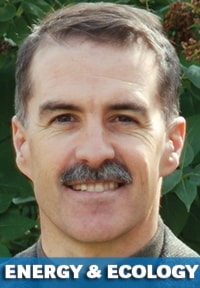“Once the Bakken and Eagle Ford oilfields peak and decline, the United States has no other ‘energy rabbit’ in its hat.”
— Steve St. Angelo
Bakken and Eagle Ford, of course, refer to the huge shale oil fields in North Dakota and Texas, which use fracking technology to get oil and gas out of the ground. The quote is somewhat flippant, but it merely echoes what the U.S. Energy Information Agency is saying. The EIA is the government’s main cheerleader for the shale oil revolution, but even it admits that production will peak in 2021 and then go downhill from there.
And we already know that first-year production for individual wells in the Bakken peaked back in 2010 — a clear sign that the best spots for drilling had already been picked over.
So this energy revolution will be a flash in the pan. It might last a decade or two, and it will only serve to divert attention from the need to conserve energy and look for alternative sources. And we can only hope that there will be no lasting damage to the aquifers in the region.
What does this mean for Alberta? And Canada?
It certainly means that the price of a barrel of oil will rise. So if you’re an oilsands investor, that’s a good thing. And if you’re a politician with a short time horizon, that’s a great thing. You will do everything in your power to see that bitumen production doubles over the next decade or two, and the higher price of a barrel of oil will help to enable that.
But when the average person looks at the overheated economy in Alberta and the infrastructure, which is creaking at the seams, questions start to arise.
Just look at Hwy 2. When it was built in the early 1960s, the traffic volume just south of the Hwy 11A junction was about 2,500 vehicles per day. Today, it is about 40,000 vehicles per day. No matter, I hear some say. Just make six lanes. Except that there will always be the four-lane constriction over the Red Deer River, due to limited right-of-way space. And besides, experts have already stated that we’ll soon need eight lanes between Calgary and Edmonton.
Then there’s Hwy 63. When I was firefighting out of Wandering River in the late 1980s, the traffic volume was about 1,000 vehicles per day. Now it’s almost 5,000 vehicles per day. That’s an increase of 500 per cent over 25 years (compared to a rise of about 250 per cent on Hwy 2 during the same period).
Do you think that our leaders gave much thought to the supporting infrastructure when the whole world wanted to come to Alberta and invest in bitumen mining? Peter Lougheed did (as I’ve noted in previous columns), but the rest of them only seemed to take notice when grieving families buried the remains of Hwy 63 casualties.
And now we’re supposed to believe calm assurances that oilsands production can double again in little more than 15 years? Have we all gone completely mad? Do we really think that we are wiser than Lougheed when he advised us to back away from the bitumen feeding frenzy? Or are we too much in love with our McMansions and our Hummers and all of our other shiny toys to give a second thought to the matter?
I’ve been watching an old silent movie called The Trail of ’98. It’s all about the Klondike Gold Rush, and the greed and stupidity that it fostered. And I’m thinking that some time in the distant future, a movie will be made about the Bakken and the oilsands. Perhaps it will be called The Trail of ’18.
Evan Bedford is a local environmentalist. Direct comments, questions and suggestions to wyddfa23@telus.net. Visit the Energy and Ecology website at www.evanbedford.com.
